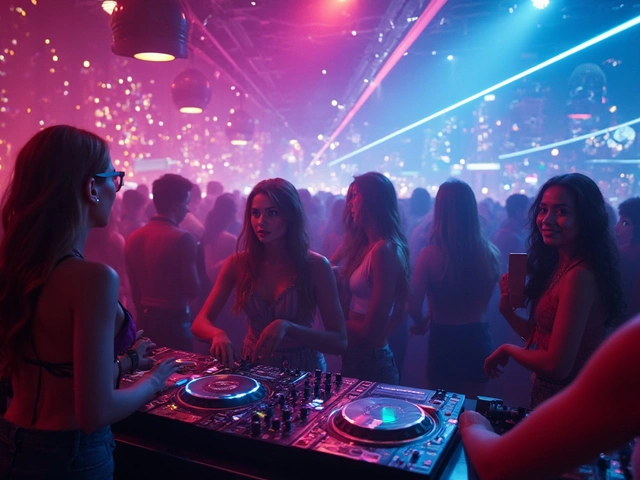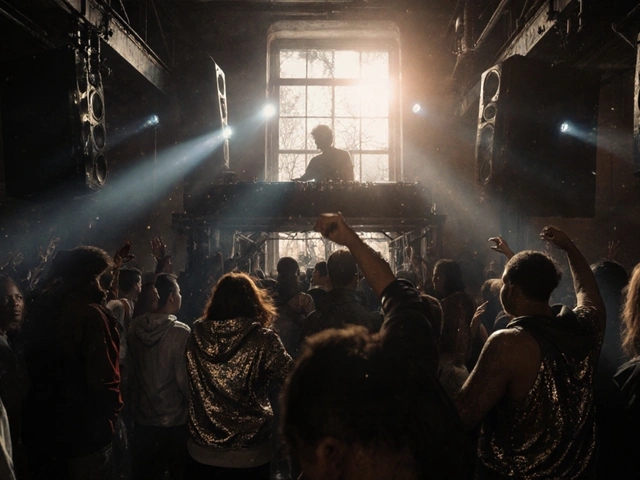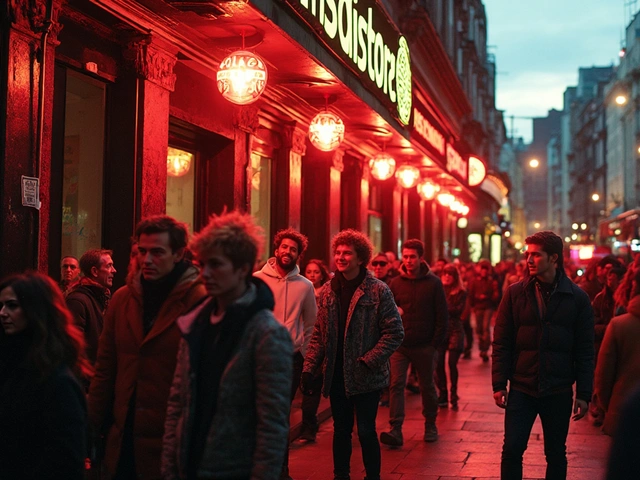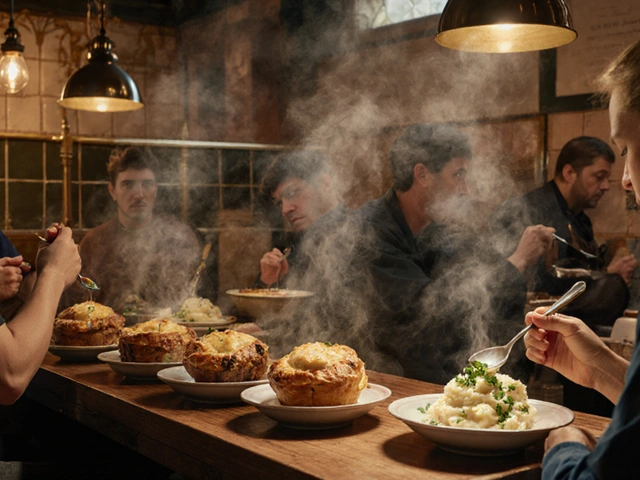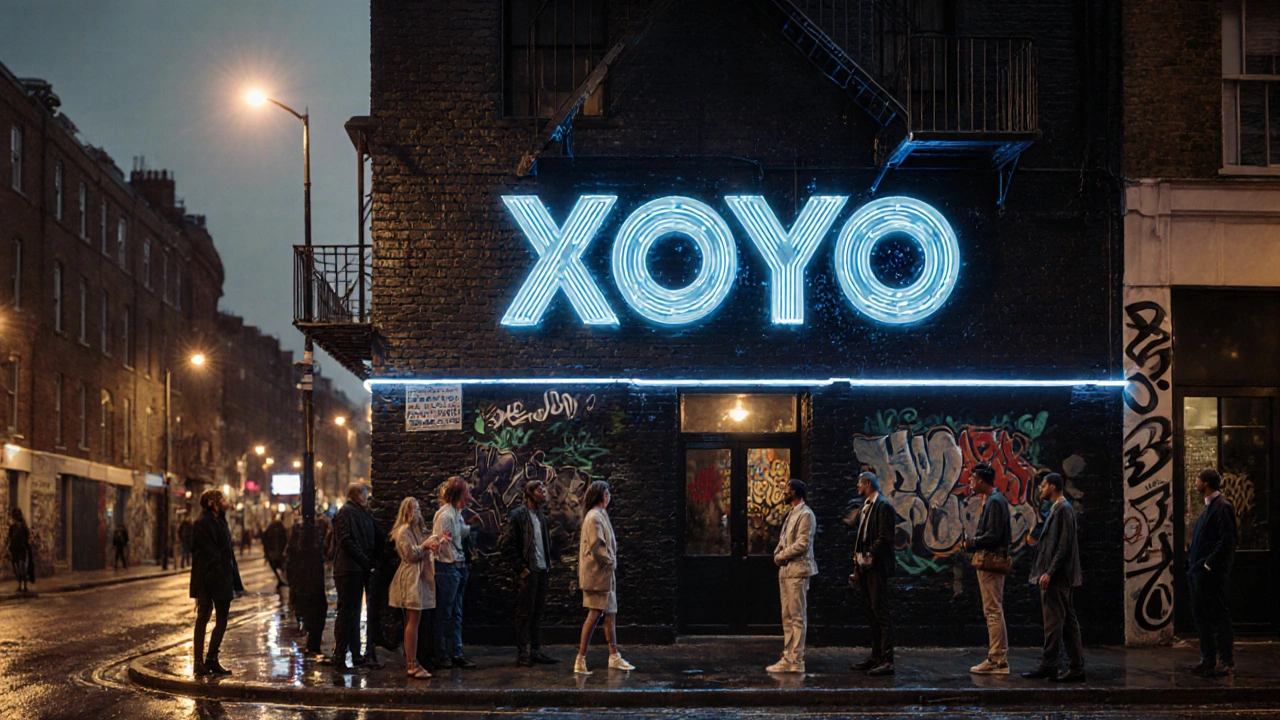
Key Takeaways
- XOYO blends top‑tier DJs, live acts, and an intimate vibe that keeps music fans coming back.
- Located in Shoreditch, it’s a central hub for EDM, indie, funk, and surprise genre‑blends.
- Tickets range from £8‑£20, with early‑bird discounts and flexible booking via the official site.
- Safety measures include strict ID checks, controlled capacity, and a clear code of conduct.
- When compared with Fabric and Ministry of Sound, XOYO offers a tighter crowd, more genre variety, and a lower price point.
What Is XOYO?
XOYO is a mid‑size nightclub tucked in the heart of Shoreditch, London, known for its cutting‑edge line‑ups and flexible space that can shift from a club floor to a live‑music stage. Opened in 2010, the venue quickly earned a reputation for booking both breakthrough artists and world‑renowned headliners. Its 800‑person capacity strikes a sweet spot: big enough for an energetic crowd but small enough to feel personal.
Why Music Lovers Flock Here
If you crave fresh sounds rather than the same commercial playlists, XOYO delivers. The club curates weekly themes-"Bass Night," "Indie Friday," and surprise "Genre‑Swap" parties-so you never know what you’ll discover next. This variety keeps the experience feeling new, even for regulars.
Another draw is the sound system. Designed by UK acoustics specialist Meyer Sound, the speakers provide crystal‑clear lows and sparkling highs, a critical factor for electronic dance music (EDM) fans who want the bass to hit just right.
Lastly, the club’s intimate layout encourages interaction between DJs, performers, and the audience. You’ll often see artists stepping off the decks to chat with guests, a vibe that larger venues can’t replicate.
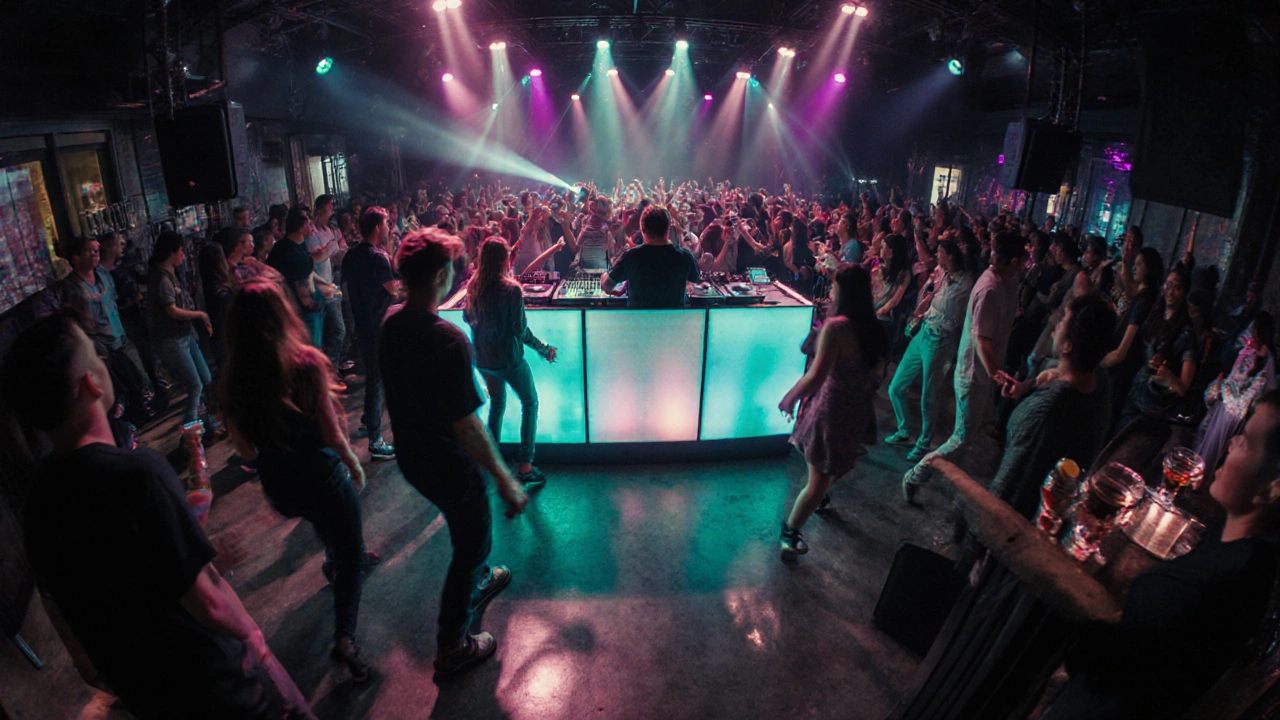
Music Genres & Nights at XOYO
XOYO doesn’t lock itself into a single genre. The regular schedule looks roughly like this:
- Monday - Tech House: Deep, hypnotic beats for winding down the week.
- Wednesday - Indie & Alternative: Live bands and cutting‑edge indie DJs.
- Friday - EDM & Bass: Big‑room house, drum‑and‑bass, and occasional trap sets.
- Saturday - Guest Curated: Guest artists bring surprise line‑ups, ranging from funk to afro‑beat.
Because the venue is flexible, it can host a live concert one night and a pure DJ night the next, making it a go‑to spot for fans who love to explore multiple styles.
How to Find XOYO Tickets and Book
The official website (xoyo.co.uk) is the safest place to buy tickets. Here’s a quick walk‑through:
- Visit the homepage and click the “Events” tab.
- Select the night you want to attend; each listing shows the lineup, start time, and door price.
- Choose between “Standard” (general admission) or “VIP” (early entry, drink voucher).
- Enter your email, confirm the payment via card or PayPal, and you’ll receive a QR code ticket.
If you prefer a face‑to‑face purchase, the club’s box office opens at 5 pm on event days, but tickets sell out fast-especially for big‑name headliners.
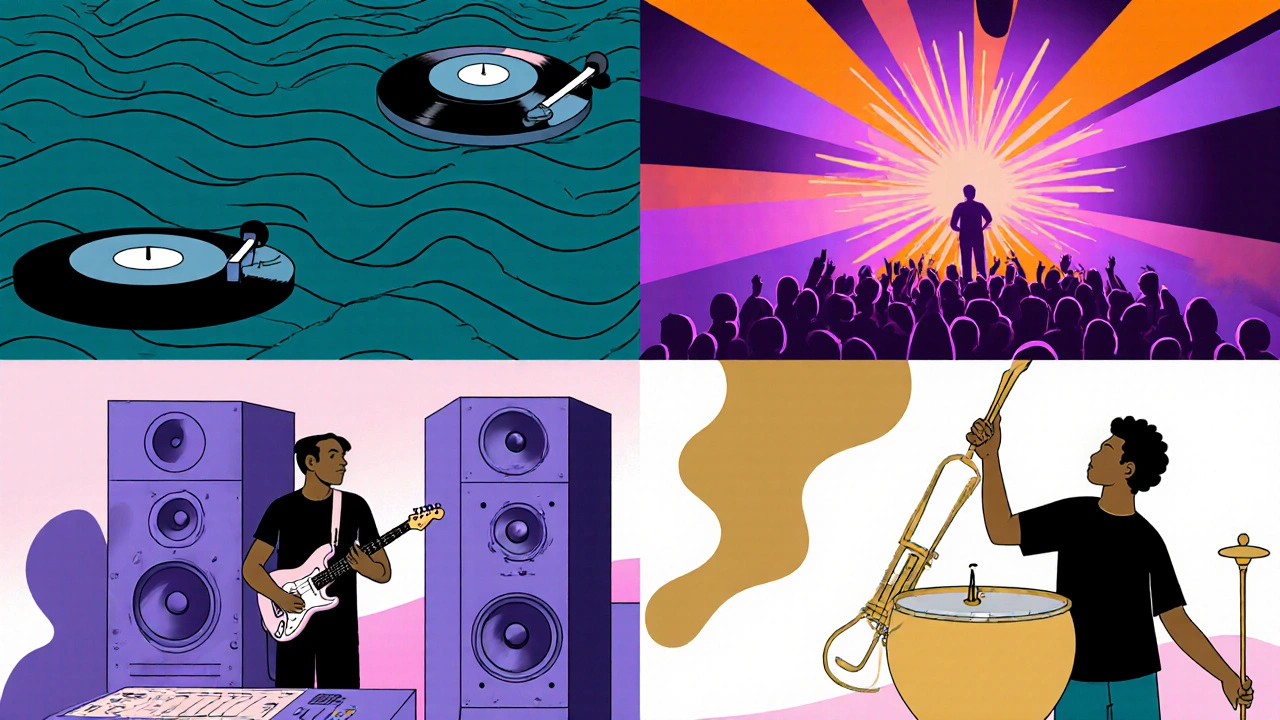
Pricing Overview
Ticket prices vary by night and artist caliber:
- Standard entry: £8‑£12 on regular nights.
- VIP entry: £15‑£20, includes a complimentary drink.
- Special events (e.g., international DJ residencies): £18‑£25.
Early‑bird discounts (10‑15 % off) are often released two weeks before the event. Signing up for XOYO’s newsletter guarantees you won’t miss those deals.
What to Expect When You Walk In
Upon arrival, you’ll be greeted by a well‑trained door staff who checks IDs and scans your QR ticket. The interior is a mix of industrial brick walls, polished concrete floors, and LED lighting that adapts to the music’s tempo.
Bar service runs along both sides of the room, offering a curated cocktail menu that includes the club’s signature "XOYO Sunrise"-a gin‑based mix with fresh orange juice, perfect for early‑night sipping.
Sound engineers constantly monitor the levels, ensuring the bass stays punchy without becoming overwhelming. The crowd typically consists of a blend of locals, tourists, and industry insiders, creating a lively, inclusive atmosphere.

Safety Tips for Clubbing in London
While XOYO prioritizes safety, it’s wise to follow a few simple rules:
- Carry a photo ID; the venue enforces a strict 18+ policy.
- Keep an eye on your drinks; never leave them unattended.
- Use reputable transport options-London’s night buses and the Underground run until after midnight.
- If you feel uncomfortable, approach the staff-they’re trained to handle disturbances quickly.
These habits let you focus on the music rather than worrying about logistics.
Comparison Table: XOYO vs Fabric vs Ministry of Sound
| Venue | Capacity | Main Music Focus | Average Ticket Price | Location |
|---|---|---|---|---|
| XOYO | 800 | EDM, Indie, Live Acts | £8‑£20 | Shoreditch, London |
| Fabric | 1,400 | House, Techno, Drum‑and‑Bass | £12‑£25 | Farringdon, London |
| Ministry of Sound | 2,000 | House, EDM, Trance | £15‑£30 | Elephant & Castle, London |
In a nutshell, XOYO offers a cozier setting and lower price points, while Fabric and Ministry of Sound boast larger capacities and a more singular focus on heavyweight club genres.
FAQ: Your XOYO Questions Answered
What’s the dress code at XOYO?
Smart‑casual is the safe bet. Think neat jeans, shirts or dresses, and avoid sportswear or gym shoes.
Can I bring a bottle of my own drink?
No, the venue is a dry‑service bar. Outside alcohol is not permitted, but the in‑house cocktail menu is extensive.
Is there wheelchair access?
Yes, XOYO provides a ramp at the side entrance and accessible restroom facilities.
Do they host non‑DJ live performances?
Absolutely. The club’s flexible floor plan accommodates live bands, vocalists, and even acoustic sets on designated nights.
How early should I arrive for a popular event?
For big‑name DJs, get there at least 30‑45 minutes before doors open to avoid long queues and secure a good spot.
Ready to experience the vibe for yourself? Grab a ticket, plan your transport, and dive into one of London’s most dynamic music scenes at XOYO.
Comments (7)
- Jonny BiGSLiCE
- October 20, 2025 AT 15:15 PM
XOYO represents an intriguing equilibrium between intimacy and sonic ambition, offering a venue where the bass can resonate without overwhelming the collective consciousness. Its capacity of eight hundred strikes a sweet spot, fostering community while preserving acoustic fidelity. The venue's programming, which alternates between techno‑house, indie, and guest‑curated nights, encourages a continual renewal of experience for regulars. Moreover, the Meyer Sound system ensures that each frequency band is articulated with precision, a detail that serious audiophiles will appreciate. In essence, the club functions as a laboratory for contemporary club culture, inviting both seasoned revelers and curious newcomers.
- Luke Ollett
- October 20, 2025 AT 19:06 PM
Ah, because we all know that paying £15 for a drink and a slightly better light show is the pinnacle of fiscal responsibility-truly groundbreaking. The comparison table, however, does an admirable job of illustrating how XOXO‑I mean XOYO-outshines those “larger” establishments by simply being smaller. One might even suggest that the intimate crowd is a clever ruse to hide the fact that the venue runs out of napkins faster than a coffee shop on Monday mornings.
- Trent Thevenot
- October 21, 2025 AT 00:40 AM
When evaluating XOYO through a rigorous analytical framework, one must first consider the acoustic engineering principles that undergird its sound system; Meyer Sound is not merely a brand but a paradigm of precision acoustic design, delivering a frequency response that is both flat and dynamic, thereby preserving the integrity of the music across the venue’s 800‑person capacity. The curatorial strategy employed by XOYO-alternating between delineated genre nights such as Tech House on Mondays and Indie on Wednesdays-creates a temporal mosaic that mitigates listener fatigue and encourages eclectic musical consumption. Furthermore, the venue’s adaptive floor plan facilitates a seamless transition between DJ‑centric performances and live band showcases, a flexibility seldom observed in clubs of comparable stature. Ticket pricing, ranging from £8 to £20, aligns with the venue’s value proposition, offering a cost‑effective alternative to the more exorbitant entries at Fabric and Ministry of Sound while maintaining a comparable quality of production. The implementation of stringent ID verification protocols and a clearly articulated code of conduct enhances patron safety, thereby fostering an environment conducive to uninhibited enjoyment. In addition, the strategic location within Shoreditch situates XOYO at the nexus of London’s burgeoning creative districts, granting easy access via night buses and the Underground, which in turn amplifies its appeal to both domestic and international visitors. The presence of a well‑trained door staff not only expedites entry but also serves as an informal deterrent against disruptive behavior, reinforcing the venue’s commitment to a respectful atmosphere. The bar’s cocktail menu, highlighted by the signature “XOYO Sunrise,” exemplifies an integration of brand identity with beverage offerings, thereby enhancing the overall sensory experience. Moreover, the club’s inclusion of wheelchair ramps and accessible restrooms signals an adherence to inclusive design principles, ensuring that patrons of varying mobility can partake equally. From a sociocultural perspective, XOYO operates as a micro‑cosm of contemporary music culture, where the convergence of diverse genres catalyzes cross‑pollination among artists and audiences alike. The venue’s propensity to host guest‑curated nights introduces a stochastic element that keeps the programming fresh and unpredictable, a characteristic that distinguishes it from the more formulaic line‑ups of its larger counterparts. The emphasis on audience‑DJ interaction, wherein artists frequently step off the decks to converse with guests, cultivates a communal ethos that is often absent in larger, more impersonal clubs. Finally, the club’s operational model-balancing affordable ticket tiers, flexible programming, and high‑quality sound-positions it as a benchmark for sustainable nightlife venues in metropolitan contexts. In sum, XOYO’s multifaceted approach to clubbing not only satisfies the auditory appetites of its patrons but also contributes to the broader ecosystem of London’s music scene. Its sustained relevance over a decade underscores its adaptive capacity in a rapidly evolving entertainment landscape.
- Kiana Rigney
- October 21, 2025 AT 07:36 AM
While the authors laud XOYO’s “intimate layout” as a catalyst for synergistic DJ‑audience entanglement, one must interrogate the underlying semiotics of such spatial dynamics; the purported “community vibe” may in fact be a performative construct designed to obfuscate the commodification of affective labor inherent in nightlife economies. Moreover, the reliance on “genre‑swap” events could be critiqued as a strategic diversification tactic that dilutes the club’s ontological authenticity, rendering the experience a pastiche rather than a coherent sonic narrative. From a technocultural standpoint, the Meyer Sound system, albeit technically proficient, perpetuates a homogenized acoustic palate that marginalizes sub‑frequency textures valued by avant‑garde producers, thereby reinforcing hegemonic auditory standards. In this light, XOYO’s operational paradigm reflects a neoliberal appropriation of cultural capital, packaging eclecticism as a marketable commodity while sidestepping substantive engagement with the radical potential of experimental soundscapes.
- Hannah Johnson
- October 22, 2025 AT 04:26 AM
Sounds like a solid spot for a night out!
- Anna Krol
- October 22, 2025 AT 10:00 AM
yo i totally get ya, this place is lit af. the vibe + the drinks = perfect friday night, dont u think? omg cant wait to check it out!
- Chaunt Elyza
- October 23, 2025 AT 08:13 AM
XOYO is the real deal, no fluff-just pure beats and good vibes! 🎧🔥 Grab a ticket and you’ll see why it tops the list.

